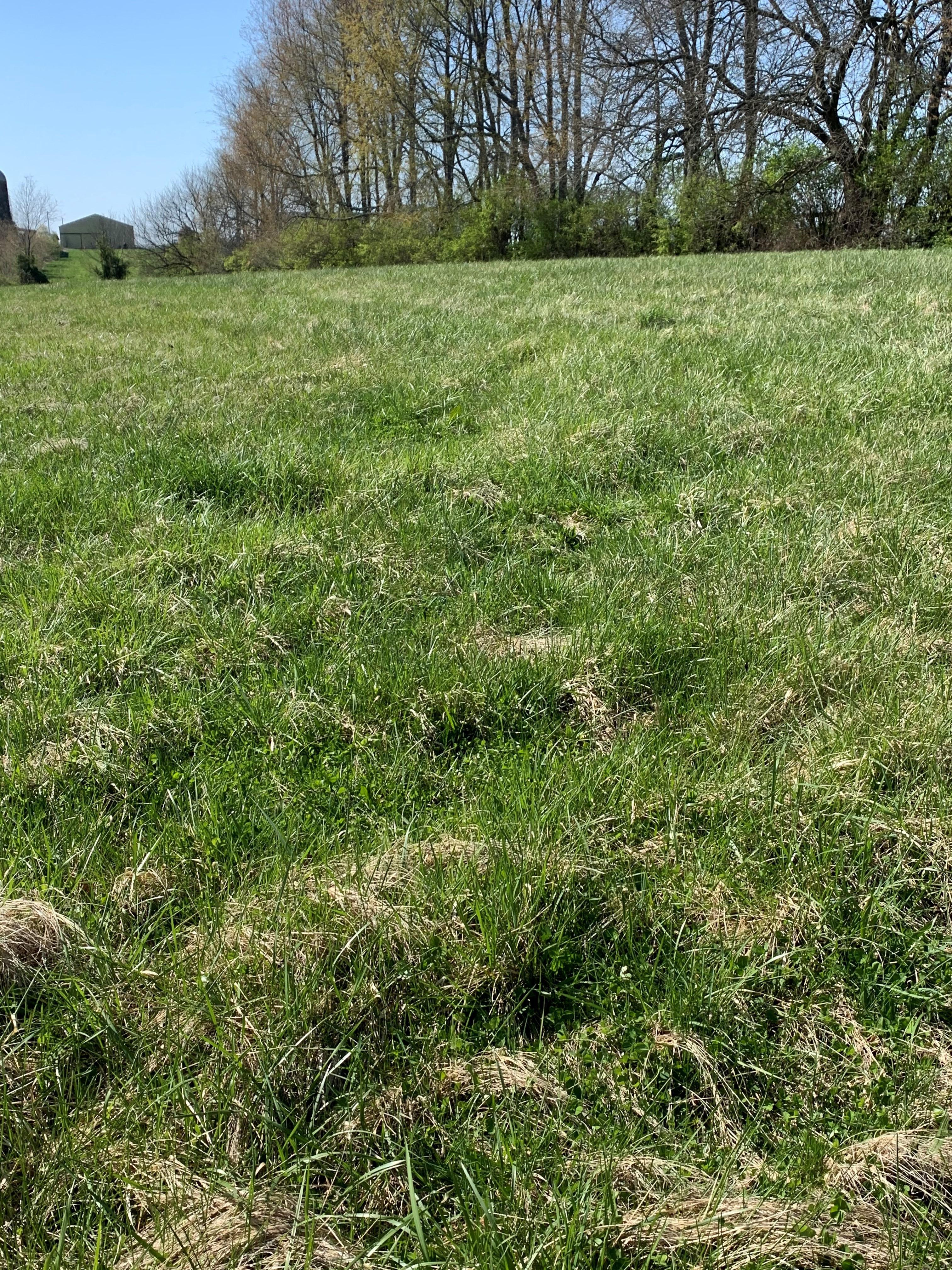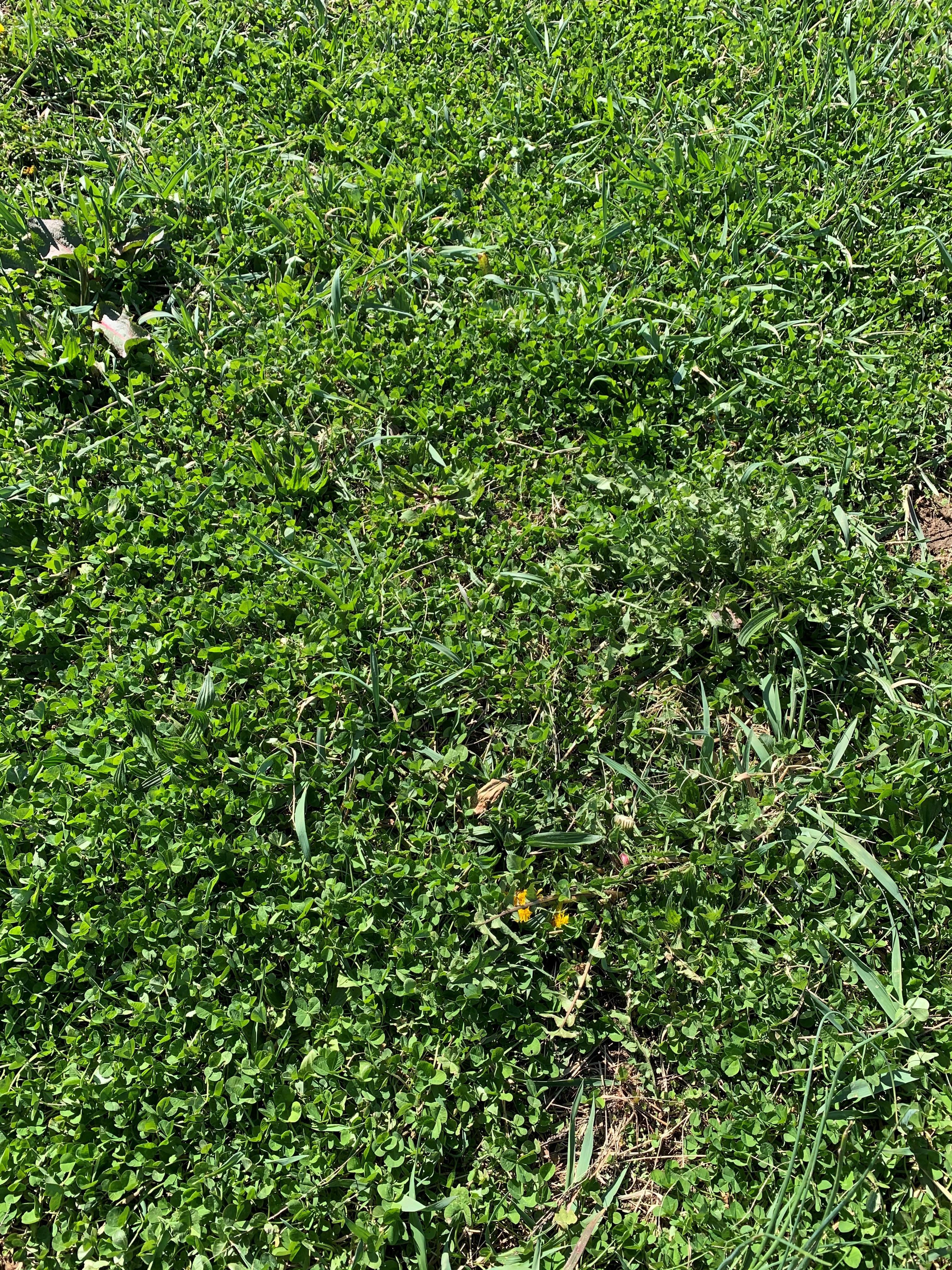Pasture Management Begins with Good Scouting
As spring arrives, many horse owners’ attention turns to their pastures. This is when many start haphazardly throwing seed and fertilizer and herbicide on the ground, which often leads to frustration in the fall and winter, when little has changed. Having spent the last 11 years evaluating pastures and training others to do so, I believe good pasture management begins with knowing what you have.
Pasture Scouting 101
First, “scouting” does not include looking over the fence as you drive out of the farm; there’s only so much even a trained eye can see from the road. For example, by walking pastures in late February or early March, you would be able to see newly germinated buttercup plants, which is also the ideal time to spray for them. But if you wait until the yellow flowers are visible from the road, then it’s too late to spray. Effective scouting means getting out and walking across the pasture, and ideally this should be done on a regular basis. Below are some things I look for when scouting pastures:
- Desirable grasses – You do not have to know what everything out there is, but you do need to know what you’re trying to grow, and what it looks like. For Central Kentucky, this usually includes Kentucky bluegrass, orchard grass and tall fescue. Your local county extension agent can likely show you how to identify these grasses, or check out our species pages on the UK Forage Extension website at https://forages.ca.uky.edu.
- Grass color and density – This time of year, color is a great indicator of plant health. Cool season grasses should be turning a deep, vibrate green color. If they are pale or yellowed, there may be a soil fertility issue, or in some years, lack of rainfall. Warm season grasses are likely still brown and stand out easily. For annual warm season grasses, such as crabgrass and foxtail, seed heads may still be visible from last year, although these plants will be dead. Grasses may not be especially tall, but they should be dense. There is no need to overseed dense grass pastures. Seedlings need sunlight to germinate and grow, so if you can’t see many large spaces (at least 6 inches) of open ground, seeding is not worthwhile. So carefully consider if overseeding is necessary, because fall is typically a better time of the year. (Figure 1)

Figure 1. Because this pasture has been given sufficient rest in recent years, it has thick growth and a healthy green color. Overseeding this pasture would be a waste of time and seed. - Legumes – Legumes can really tell you a story. Red clover typically indicates better than average management, particularly if you see a fair bit of it, because it doesn’t survive well under heavy horse grazing. Sprinkles of white clover throughout a pasture are ideal, but large patches of pure white clover are signs of overgrazing in the past, and likely locations of weeds or bare soil in the future.

Figure 2. Thick stands of white clover are a clear indication of overgrazing, and likely the location of significant weed establishment in the near future. - Weeds – The most common question I get is, “What/when should I spray my pastures?” Regular scouting is essential for answering this question because what you have and what you’ve had in the past can change how you approach weed control. No herbicide controls all weeds, especially without harming desirable grasses. Instead of trying to identify every weed in the pasture, look for the most common and troublesome two to three species and focus on them. They may be the most prevalent, or the largest or the fastest growing. Identify these weeds, and then select an herbicide that will control as many of the top three as possible. For timing, it depends on the weed species, so determine the best timing for the specific weeds in your pastures. Weeds present will vary from one pasture to the next, so consider each pasture separately. For a list of more common weeds in Kentucky, as well as the best herbicides and time frames for control, check out Broadleaf Weeds of Kentucky Pastures -AGR 207 by Dr. J.D Green (http://www2.ca.uky.edu/agcomm/pubs/AGR/AGR207/AGR207.pdf). Always read and follow all herbicide label recommendations.
- More on weeds – What weeds are present tell a lot about past pasture management. Here are a few that I often see and what they typically mean:
- Buttercup – Overgrazing, particularly over winter, as this weed germinates in late winter and flowers in early spring.
- Nimblewill, with few broadleaf weeds – Aggressive spray program and poor overseeding success. Spraying created bare spaces and nimblewill spread into those spaces because horse do not graze nimblewill.
- Dandelion and plantain – these are normal weeds in horse pastures, and horses eat them. As long as they aren’t extremely prevalent, do not worry about these.
- Broomsedge – rare in horse pastures, but will pop up in poorly fertilized pastures.
- Wild violet, horse nettle, mare’s tail and thistles – These are tough to control, so their presence, even in smaller quantities, suggests the need for more aggressive herbicides.
- Seed heads – This one is simple; all seed heads are bad – or at least, undesirable. Weed seed heads will only plant more weeds and should be mowed off. When grasses begin to produce seed heads, they shift energy to producing seeds, meaning the leaves below do not grow well, and the overall pasture quality decreases dramatically. Additionally, most of our grasses are very poor at naturally reseeding themselves. Finally, the toxic components in tall fescue are concentrated in the stem and seed head. Essentially, no good comes from seed heads.
- Inconsistent pasture height – Horses are spot grazers, preferring to return to the same areas again and again to graze and avoid other areas completely. This decreases forage utilization, increases bare soil (leading eventually to weeds in their preferred areas) and also creates large variation in nutrient distribution. To reduce this issue, rotationally graze pastures and spread resources, such as gates, water, feed, hay and shade across the pasture. Mow when horses are first moved out of the pasture before rest, allowing for even regrowth. Drag pastures after mowing to distribute manure and help ensure that large amounts of grass are also distributed to remove thatch. Dragging when it is hot and dry is best, as is holding horses off the pasture for 21 -28 days.
- Soil type – there is a whole area of science, and collegiate competitions, for being able to identify soil type by touch and sight, but this level of understanding is not necessary for the average horse owner. When I give owners a soil map of their land, they often look at it confused at first, then it begins to make sense. Areas with poor soil types often correlate with areas that “never grow much grass” and changes in soil type often follow contours and slopes. Soil maps provide great insight to the capacity of the ground below, but regular and critical observation of pastures can give you a similar picture. Consider soil type when planning fencing, barn and driveway locations as well as stocking rates in pastures. UK publication Estimating Carrying Capacity of Cool-Season Pastures in Kentucky Using Web Soil Survey (AGR-222) includes a step-by-step guide to pulling a soil map of a farm and calculating carrying capacity of horses.
Things pasture scouting won’t tell
There are a few things that, no matter how many years of experience you have, walking a pasture simply will not answer.
- Soil fertility – While there are a few plant species that can hint to poor soil fertility, they will not tell you how to remedy it. Only a properly collected soil sample can tell you how much phosphorus, potassium and lime are needed on your pastures. Sample every two to three years and apply only as needed. Nitrogen can be applied every year without a soil test in most cases and, for cool season grasses, fall is the recommended time to apply.
- Tall fescue toxicity – Another area where your eyes, and your horse’s nose, can’t tell you much. When considering toxic tall fescue, there are two components to consider independently. First, infection level, a percentage of plants infected, is actually easy to predict. After testing more 3,000 pastures, I can say with confidence that if you didn’t plant an endophyte free or novel endophyte tall fescue, then you will have Kentucky 31+ toxic tall fescue. However, if you, or someone else, has planted a different type of tall fescue, only an endophyte test will tell. In addition, the toxic compound in tall fescue also cannot be determined by visual inspection and is nearly impossible to predict. Ergovaline, the most common toxic component, varies by time of year, environmental condition, pasture management and unpredictable factors. Testing is the only way to determine how toxic the plants are at that moment.
Resources for Pasture Scouting
In many cases, just a simple walk through a pasture, done fairly regularly, is enough to inform you about the health and productivity of your pasture. Below are a few resources that might help you.
- If you are wanting more structure, consider using the UK Horse Pasture Health Scorecard. This is an evaluation tool modeled after a similar tool used by NRCS to objectively evaluate and compare pastures. It includes a five-point scale of 10 categories, many of which I listed above. You can download a draft of this score card on the UK Forage Extension website under the Equine Tab (https://forages.ca.uky.edu/EQUINE). A final extension publication with this scorecard is expected to be released soon.
- There are many apps that can be downloaded and used to identify plants. Some use a dichotomous key, others work off photographs. I’ve seen several that work well, but my favorite is called PictureThis and is quite accurate using pictures alone. It is available for download on iOS and Google markets and has a free and paid version.
- If you are new to walking pastures, consider calling your local county extension agent and ask them to walk a few pastures with you. They will likely be able to identify many of the grasses and weeds and talk more specifically about exactly what they see.
- Finally, the UK Horse Pasture Evaluation Program is available to those in the state of
Kentucky. For this program, trained undergraduate and graduate students will collect more systematic observations of grasses and weeds present, and make recommendations for seeding, spraying and fertilizing. For more information and a quote, visit https://forages.ca.uky.edu/equine or contact me at Krista.Lea1@uky.edu.
Whether you take a walk just for this purpose, or look at plants while you walk to catch horses or find a lost halter, simple observation can answer so many questions about your pasture. With the weather getting warmer and the sun shining brighter, now is the perfect time to get in the habit of scouting pastures and making plans for fall renovations.
Krista Lea, MS, plant and soil research analyst and coordinator of the UK Horse Pasture Evaluation Program, UK’s Department of Plant and Soil Sciences, provided this information.
